Google has long been refining its search algorithms to favor results that are authentic, verified, and accurate. One of its most recent significant updates related to that is Google EAT (Expertise, Authority, Trustworthiness).
Through a series of changes, Google EAT seeks to verify the authenticity, authority, source, and accuracy of online content. One of these ways is through link building and backlinking.
Link building doesn’t just serve the purpose of verifying facts and figures but also building the authority of a website. When Google identifies that one website is linked to another with authority, it automatically raises the rankings of the former.
While this isn’t an automatic result in a webpage’s ranking improving, it does help to get there. Consistent backlinking eventually raises the authority of a website for certain niche search areas. It’s a process that every website needs to go through to ensure its authority, trustworthiness, and expertise.
1- What is Link Building?
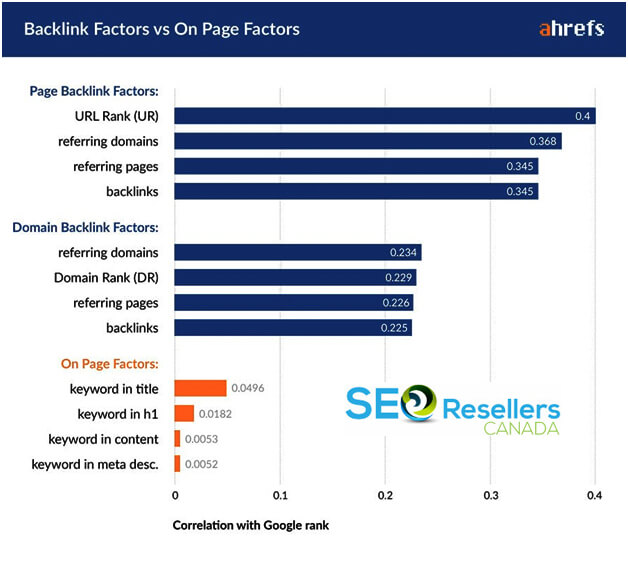
Link building is the process of acquiring inbound links that add authority and authenticity to a website. External linking to more authoritative sites creates a semblance of authority by association for new sites.
This helps Google assign you better rankings on search results. It only makes sense for you to get the best information that comes from the best sources, after all.
However, this isn’t the only reason that link building is a viable SEO exercise. It works to slowly increase the authority of a website rather than just the webpage.
Over time, if Google analyzes your webpage consistent sourcing and external linking, it will improve your authority.
All those links add up over time to give your page the authority it needs to win over Google’s approval. Over time, this will build your authority so that you don’t need to depend on backlinking primarily.
Hence, slow link building pays off to get you the authority you need in niche searches.
This ultimately leads to better traffic and better conversions by association. Your website benefits from creating its authority by essentially piggybacking on the authority of others.
According to Ahref, the number of inbound links to a site or page has a high correlation with Google rankings.
In this study, it was made evident that link building has an even higher correlation score than on-page factors. These include keyword usage, meta tags, etc. Hence, perfectly placed keywords are much more effective for a webpage or a post with authority than without.
This makes a lot of sense logically, as well. There are millions of results for most queries on Google. All of them are technically using one or another variation of a keyword within the question.
The most authoritative pages need to float to the top. Hence, the best way to set them apart is through link building, so says the research.
How Does Link Building Work?
There are several factors that Google weighs when assigning you a rank on its search results. What you need to ensure is that you’re never confined to the wasteland of page 2.
Hence, it’s only top quality links and sources that will do here. Of course, don’t worry about ranking high for each genre, topic, or niche. You only need to rank highly for what your users are searching for.
This isn’t going to be a broad topic like tech or gardening tutorials. If you have a community of users that loves reading about “dog grooming tips,” you only need a rank for that.
The sites that you link to need to be as authoritative as possible. The more authoritative it is; the more influence it can wield on your behalf.
Hence, if you’re linking a study or a tip from an expert, that link needs to be highly ranked. Take the example of sourcing a survey from the publication ‘Nature.’ That’s a very authoritative source.
However, sourcing from a university professor’s blog won’t have the same authority.

Domain Rating for Tomsguide.com (Source: Moz.com)
These links are judged on two basic ratings. The first is Domain Rating. It refers to the strength of a site and is measured on a scale from 0-100. 0 typically refers to a site that is new with very little content.
100 refers to a site that has been around for many years and is known for a lot of authoritative content.
As you can see above, the Domain Rating for Tomsguide.com is 88, which is very high. Also, its authority is linked to the nearly 52,000 root domains that it has.
You can also see that the 1.9 million keywords within the domain also play a part in increasing authority.
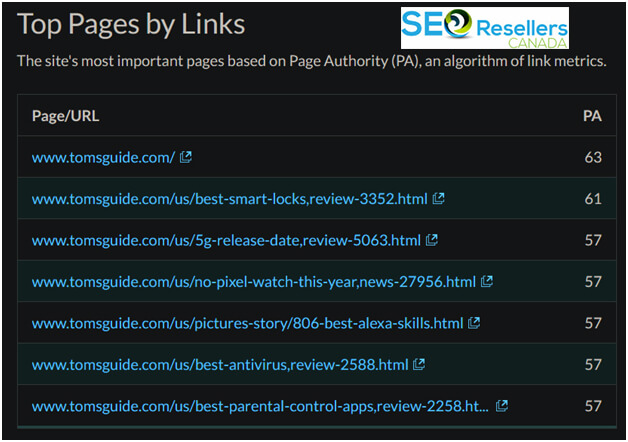
The second rating is the URL Rating. This is also measured on a scale of 0-100. It refers to the authority of an individual page.
As you can see above, different URLs within Tomsguide.com don’t all have an overall rating of 88. This shows that a single URL of a website can have vastly different ratings of authority and trustworthiness than others. This doesn’t technically relate to the entire website.
Hence, one page on a website can have a very high URL Rating. However, the Domain Rating for that website isn’t necessarily going to be very high, and vice versa.
If you need to build links through authoritative external linking for your site, there’s no one better than SEO Resellers Canada.
Note that authoritative doesn’t always mean popular. There are websites out there that get billions of views every month. However, they don’t necessarily have to do with the content you’re posting. In which case, linking your content to those websites won’t deem you authoritative.
Irrelevant linking can do real damage to your authority, so don’t do it. Remember, rank for the niche you serve.
2- Requirements for High Quality Link Building
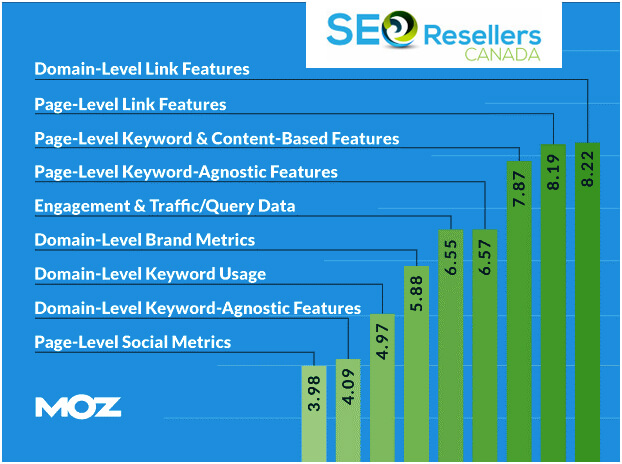
3- Basic Link Building Strategies

These are some of the most basic link building strategies that you should start with. They’re tried and tested, and they work for most websites.
Note that every single website and webpage requires a slight variation of these strategies. So these are a great starting point, but you need to build up your own strategy following these.
Consistent Content Creation
The foundation of link building lies in consistent content posting. Unless your website has something to offer, you’re never going to attract sustained traffic.
Hence, you have to have a content plan that offers something new week by week. You don’t have to have a set posting schedule or even post weekly for that matter. However, you need to seize opportunities.
Don’t forget to catch trends, post on the holidays, and capitalize on relevant events. If you maintain a steady stream of content, you will continue to register on Google’s radar.
Make sure that your content isn’t just regurgitated material though. Make sure you put your own spin on it. Even if you’re copying someone else’s material, make sure to use it in your own unique way.
Reviews and Shares
Make sure that you share your products and services to influencers and get them to share it.
Whether it’s a popular blogger, instagrammers, snapchatters or YouTubers, reach out to them all.
Make sure that your product is promoted by the right people. When someone with authority retweets you or promotes you, you will definitely get more authority.
Furthermore, the more social media platforms that you’re shared on, the better your site will rank on Google.
With so many social media platforms out there, you’re bound to get noticed on one. Just remember to follow through and promote your content regularly.
Links from Authoritative Sites and Partners
Make sure that you ask people that you know to link to your website. Every little bit helps. Even if they’re not influencers or big names in the industry; a link is a link.
Links from sites that are in the same industry help Google recognize your status within that niche. Since you’re marketing to a niche audience, all the relevance that you can generate helps.
Anchor Texts
The linking page that is used to link to your content is one of the most important things Google analyzes. When ranking a page, the anchor text on the linking page is invaluable.
The anchor text needs to contain the keyword phrase so that Google knows to rank for your specific niche. Your link building is only as good as the niche that it is optimized for, remember that.
Quality of Linking Page
The quality of the page that is sending the link also matters. Search engines usually prefer links from high quality and trusted pages. Of course, something that is recommended by Time Magazine is going to be better promoted than one from a local newspaper.
What Page is the Link Aimed at?
People often make the mistake of linking the homepage when they’re trying to link back to their website. This is a costly mistake. Visitors prefer to land exactly where the relevant content is.
If you send them to the homepage and trust that they’ll find their way around, you’re mistaken. Why should they after all? They’re trusting you to do as much.
Hence, you should link to the exact page that you’re talk about in the text. This will let individual pages achieve high rankings which will link back to the domain.
Keyword Research
There are numerous keyword research tools available online. SEO Resellers Canada can do a great job of getting the best keywords for your pages to rank highly. They follow the fundamental rules of niche targeting, high volume, and less competition.
Assign Keywords to Content
Grouping your keywords very strategically is paramount. Remember that you’re ranking for a specific niche.
Try to get as specific as you can for a topic. For example, if you’re writing about how to invest in the stock market, talk about the stocks and the audience.
Try a keyword like “investing in crude oil for single mothers” rather than generic phrases like “crude oil investment”.
Link Pages with Anchor Text
You need to apply your keyword research for intelligent inter-linking as well. Do this by linking to content using the keywords that you’ve discovered.
This way, the readers will know exactly what to find. Also, it’ll make it easier for Google to target those keywords as well.
Find Pages Within Your Site to Link
When you’re creating content on your site, it’s great to link those different content posts together. It helps Google crawl through your website for one. For another, it helps link your site together, making navigation easier.
Another way to link to different portions of your site is to use similar or adjacent keywords. That way, every single mention of that keyword can be indexed by Google on your site.
Competitor Research
You’ll also need to research what your competitors are doing from time to time. This is to stay in the game for as long as possible. Sure, originality and genuinely clever ideas do translate within content marketing and link building.
However, if you can beat your competitors at their own game, that will help too. Don’t blindly copy backlinks, however. Irrelevant and Spammy links will obviously be a part of their website too, as with everyone else’s.
Make sure that the links you are using or copying will be relevant to your industry and niche.
Studying your competitors for link building shouldn’t all be about copying and influencing though.
Learn to note what their customers and readers are criticizing them for or asking them for. Maybe you can fill that space with your own content.
Also, learn what they’re doing to stand out. If they’re using great content aids like infographics, images, videos, etc., use them too. Make sure that you outdo them every step of the way.
Also make sure that you one up them when it comes to dead links. Scour your website for pages and links that are now inactive. Either get rid of them or fix them. This will, undoubtedly, help boost your site above your competitor’s website.
You can also reach out to linking sites to suggest your own page as a replacement for a dead source. Might as well make the best of an opportunity, right?
4- Best Link Building Processing Tools
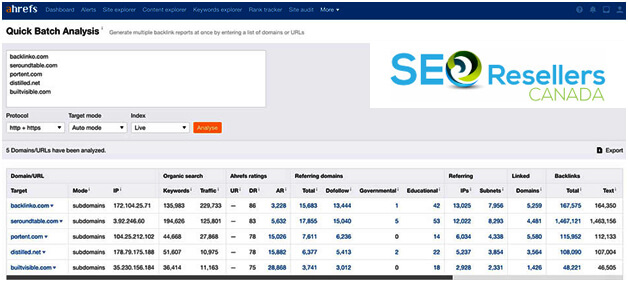
After you’ve decided what linking strategies you’re going to use, you should vet them properly. This will help you decide which ones warrant the most effort. That way, you can proportionally spend time and money on the things that matter most.
Before we start, know that nothing is better than manual vetting. You should always check what sites are able to manually produce the best results. However, that can be very time-consuming.
It’s better to get some reliable tools to vet sites for you. So here are some great link vetting tools that will get the job done.
Ahrefs Batch Analysis
Ahrefs’ Batch Analysis is a tool that you can use to pull up SEO metrics for about 200 websites at once. This allows you to look at multiple linking building opportunities simultaneously.
You can use the domain mode to actually figure out which type of guest blogging opportunities can serve you the most.
The Batch Analysis tool gives you the amount of keywords which will match the domain, the domain rating and even the URL rating.
This will allow you to find out which sites are worth pursuing the most compared to which ones aren’t ranking well. The sites with the highest rankings will get the most eyeballs on your content.
You can do the same with webpages by using URL mode. You can find out the exact same metrics for the webpages as well.
URL Profiler
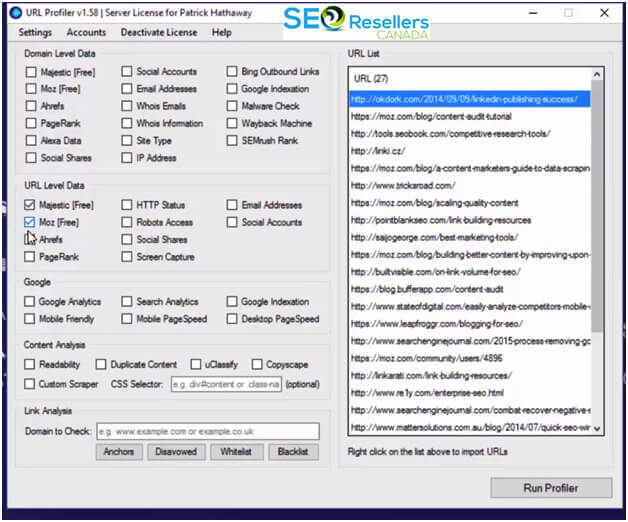
This is a great tool to help analyze a bunch of different metrics, including social sharing, HTTP status, Ahrefs, etc.
You will be able to see just how good certain websites are at attracting traffic based on all these metrics. You can simply paste all the URLs that need analysis and let the tool do its work.
It’ll even rank those websites for readability and mobile-friendly SEO, etc. All of these metrics will determine whether the pages are worth posting on or worth investing in.
It also connects with an Ahrefs’ account as well. With it, you can pull up Ahrefs’ metrics for thousands of URLs at the same time. It also integrates with Google Analytics and Search Console and Moz, etc.
Screaming Frog

Screaming Frog is much more useful than just for detecting technical SEO issues. It’s also got a built-in integration with Ahrefs. It also integrates with Google Search Console and Analytics.
However, it goes beyond URL profiler when it comes to pulling SEO metrics out of Ahrefs. It’s much more granular and the interface is much simpler.
Here are just a few things it can do:
- Pull Referring C-Class IPs for a website
- Pull the number of do follow and no follow backlinks from a website
- Run crawls to discover all the broken links on a website
There are even options here to let your custom search web pages in bulk for snippets of text. You can use this in tandem with Ahrefs’ content explorer as well. It will help you discover a lot of unlinked mention opportunities.
Scrapebox Whois Scraper

It’s useful to know everything about a website that you’re going to post on or use for link building. Essential information includes how long the website has been around for, who owns it and what it does.
The whois record from Scrapebox is a useful tool for this prospect. You can get a lot of whois tools on the internet for free if you want to do this for one site. However, if you want to check in bulk, the one solution that does it is Scrapebox.
The usefulness of this tool includes a lot of factors:
- PBNs: Private Blog Network is a network of sites that are used to build links. They allow the passing of authority to a single website so that SEO can work its magic.
- Weeding out new sites: This allows you to find out which sites are extremely new and which ones are worth investing in. If a site is very new, it doesn’t mean it’s not worth investing in. These are sites that are most likely to be abandoned or neglected. However, you can find a gem within them too.
5- Advice from Link Building Experts

These are some pieces of advice from people that work in the industry. These are SEO associates, website builders, etc.
They’ve been doing this for a long time so they know their stuff. These pieces of advice range from different marketing ideas to guest posting, to categorizing for niche websites.
Niche and Local Websites
Jacob Landis-Eigsti of Jacob-le.com says that the best way to build links is to mould your content to niche sites.
He recommends using tools like Ahrefs and SEMrush to check for backlinks for different websites. These often hold the key to follow link opportunities.
Creating adjacent content for the most visited pages can really yield some interesting results.
Data Equals Rich Content
One of the most effective ways to attract traffic is to base articles on data. Headlines and titles that include a lot of stats are sure to attract more traffic than the general article.
In 2019, the proprietary data that you got from research on your blog meant a lot more to readers. This advice comes from Matt Zejechowski of Digitalthirdcoast.com.
There are a lot of articles out there on maximizing outreach and increasing traffic on your blog. However, very few of them are based on stats and original research. Hence, those kinds of articles will generally attract a more niche audience and work on link building.
With more stats and figures backing up your stance, Google will recognize your authority more. Even more so, your authority will be bolstered by the original research that you’ve done.
Being recognized as the original source of data is more valuable than quoting another source for sure.
You can also double down on this by creating different visuals based on that data. These can include infographics, pie charts, graphs, etc.
You can also add a little personal flair to this affair by getting surveys from your audience. Anything that will help you extract more data and put your stance into perspective is a good idea.
What this will do better than most articles are given a fresh angle to an already saturated topic. Instead of just regurgitating the same material as a thousand other websites, you’ll have a unique angle on the topic.
Publishers from different websites are always looking to bolster their content with a unique perspective. Not only will this help you create links with guest posting sites, but also improve your ranking on Google’s search results.
Hyper Targeted Outreach
Brooks Manley, from Brooksmanley.com, says that hyper targeted outreach is a great way to build links in 2020.
This involves getting more personal with each client. Instead of just sending the same article to hundreds of people and getting a minimal open rate, personalization works much better. Most people can smell an automated template from a mile away.
Hence, personalizing your emails is a much better way to reach out to individuals. You can group different people regarding their activity on your blog, or recommend posts based on that activity. You can also recommend similar articles on your website to them that they’ve commented on or liked.
Building Broken Links

Stewart Dunlop, founder at LinkBuilder.io, says that fixing and building broken links is a very underrated opportunity. Through this practice, a lot of times, content creators can discover new niches to “bridge the gap”. He quotes two examples, which make a lot of sense.
- io developed an article on the timeline of crypto-currency BitConnect once. When the entire thing came crashing down as a ponzi scheme, the site was taken down completely. Hence, all the links that once went to that website didn’t work. LinkBuilder.io reached out to a lot of blogs and sites that once linked to them and redirected that traffic to their blog. Using this incredibly useful technique, they managed to get traffic from 134 separate domains. This brought a whole new crop of traffic to their site.
- Through a little bit of research, they discovered that there is a lot of one off event websites for social events. These range from small forums and workshops to large, world events. They essentially become useless after the event has been completed though. So, these websites often go dead when they’re done with. It’s not profitable to keep them up and running once they’ve served their purpose, after all. Hence, they lead to hundreds of broken links from different articles. So LinkBuilder.io decided to create pages that outlined what happened at these events. This essentially got traffic from all the sources that were interested in those events. Using this method, they were able to build high quality backlinks to different clients’ websites.
One of the best broken link rebuilding strategies is offered by SEO Resellers Canada.
Creating Infographics
Nicolas Straut from Fundera.com says a classic infographic is still effective in 2020. Even the simplest of infographics can attract a lot of views.
They work so well because they’re able to summarize a lot of information in a much more visual format. Since images are much more effective at communicating information than text, it’s well worth trying.
Sharing an infographic using a well-optimized article on a certain topic can help get more traffic to your site.
You can also use them for guest posting. Outreach to blogs and outlets usually works well when you share visual media. These sites are looking for more engaging and easily digestible content for their readers.
Creating Content that is Less Competitive
The great thing about promoting and working on niche content is that you can exploit areas that are less competitive.
Even in highly saturated niches, there are chances that you can hit on sub-topics, which aren’t saturated. According to Evan Porter, founder for “Words by Evan Porter”, this is a great way to advance link building.
Building authority in less competitive areas will allow you to more easily climb higher in the search results list.
Take the example of a finance blog. Sure, there may be many articles out there about making money and saving money. However, phrasing the post to be about sewers, knitters, or tailors, may get it more traction.
Just because you change your audience, you may be indexed for a whole new audience in Google’s database.
Even if the link building campaign you run for these pages is just moderately successful, you’ll still get traction. It will be a whole lot more successful than if you try to rank for a more general niche.
Hence, getting more and more specific for what links you are building gets you better traffic every time.
Creating Separate Campaigns for Different Pages
Quincy Smith, SEO Manager of Ampjar.com, says you shouldn’t rely on only one type of link building. It’s great to introduce some variety in to it all. Moreover, every single page deserves its own marketing campaign.
That’s the only way to ensure that you’re taking advantage of marketing at every stage.
Relying on email campaigns is a good strategy. However, making sure that you’ve also done guest posting improves your chances. When all is said and done, multi-channel marketing works.
It pays to promote your content on different channels. Not only does it ensure that you’re getting traffic from multiple sources, but it also helps improve your authority.
Guest posting is one of the best ways to do this. You do need to work hard for this to succeed though.
Guest posting usually requires that you stick to specific requirements. You will also need to be highly original to stand out. Reading guest posts can get quite boring for different readers.
Hence, a well-researched and unique guest post can stand out more than the average regurgitated material. However, successfully executing a guest post means that you get access to a totally new audience.
It means that you will get traffic from a lot of different sources and expand your audience.
Piggybacking on an Authority’s Reputation
This comes straight from Freelance Expert Mat Tutt. He says that he found that picking up links from interviews was a great link building exercise. Hence, if you’re interviewing someone else, that link can help improve your site’s reputation by association.
If you’re mentioned in the interview or if your site is, the authority of the site it’s shared on will help you.
Hence, Matt Tutt says that featuring experts within the industry on your blog or other companies will help your site.
Even if that article or interview isn’t published on your website, it will help improve your authority. Since your name is associated with your site, Google will pick up on that. In the end, you will be able to leverage that experience to improve your site’s authority.
Furthermore, if the website it’s published on decides to share the interview among its network, you’ll share in the spoils. All those backlinks will eventually get back to you.
Even with all these tips, we’ve only touched the tip of the iceberg. These are only starting tips and tricks. You’ll need to formulate your own strategy in order to rank for your niche. Just remember to keep these basics in mind when you venture forth in to link building.



















